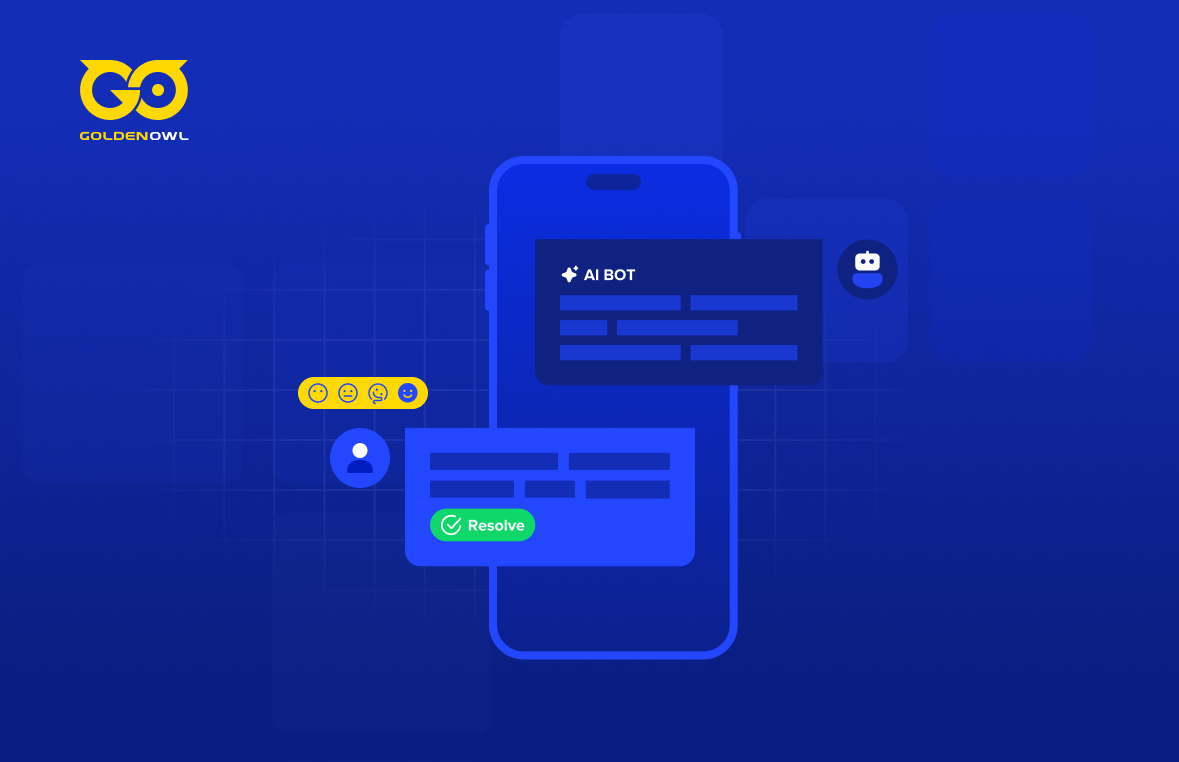What is UI UX? Explore the definitions, differences, objectives, and applications of UI/UX design, along with valuable career advice
UI/UX design is essential for several applications, including websites, mobile apps, software, and digital products, in the ever-evolving digital environment. Through enduring encounters, it helps businesses to stand out, connect with customers, and encourage loyalty. However, exactly what is UI UX?
We will go deeper into the definitions, classifications, objectives, and real-world applications of UI/UX design in the future blog article. For individuals considering a career in this area, we will also offer career guidance. Join us as we explore the tremendous effects that UI/UX may have. Let's start this investigation together and learn how UX/UI can be transformational.
What Is UI UX?
In design, the terms UI and UX are frequently used simultaneously. These two ideas, which describe the aspects of a web design separately, are different notions.
User Experience, or UX, is the term used to describe how a web design interacts with users and how they are made to feel during the whole navigational process. User interface abbreviation (UI), on the other hand, relates to the aesthetic aspect of site design. Although UX is not solely reliant on UI, it does play a significant part in determining it.
The goal of both UI and UX, despite their conceptual differences, is to produce entertaining, useful, and brand-aligned digital experiences that will eventually increase user happiness and engagement.

UI vs UX: What’s The Difference?
What Is UI?
The UI acronym stands for User Interface. It describes the interactive and visual components of a digital system or product that people may directly interact with. The goal of UI design is to create user interfaces that are clear and simple to use.
Users may easily navigate a system, discover the data they want, and complete activities with the help of a clear and well-designed user interface. On the other side, a bad UI can make users frustrated, confused, and unable to complete their jobs, leading to a bad experience.
What Is The Goal Of UI?
Enhance Usability
The user interface (UI) should be created in a way that makes it simple for users to comprehend how to interact with the system and effectively complete their duties. Users may get annoyed and depart if they can't easily discover the information they need or make their way through the UI. High bounce rates might result from poor user experiences brought on by slow load times and performance problems.
Improve User Experience
Because UI design can evoke emotions in consumers through visual aesthetics, it is frequently mentioned before UX. It adds to the emotional component of the user experience by designing interfaces that appear appealing and emotionally resonant.
Shape Brand Identity
User interface (UI) design does have a big impact on branding. The interface becomes an extension of the brand's identity, representing its personality, values, and style by being in line with the specified visual criteria. Positive brand perceptions and brand loyalty may be influenced by positive user experience (UI) feelings.

Keep User Engagement
User engagement is boosted with a responsive and efficient UI. A favorable user experience is produced and irritation or disengagement is avoided via quick load times, fluid transitions, and seamless interactions. Gamification may improve user experience, promote user engagement, and offer rewards for exploring and interacting with a system or product.
Optimize Conversion
The ultimate goal of enhancing user interaction and engagement is to maximize conversion and sales and generate revenue for the company. By enhancing the user experience and fostering trust, user engagement is essential for conversion optimization.
Users are more inclined to explore the offers, read product descriptions, and comprehend the value proposition when they believe the brand is trustworthy and reputable. The likelihood of conversions rises as a result of the increased attention.
What Is UX?
The term "UX" refers to the user experience in UI/UX. To develop meaningful and entertaining experiences, it places a strong emphasis on comprehending and meeting the requirements, objectives, and expectations of users. A good UX design promotes user interaction and engagement with the product. It has dynamic features, clear calls to action, and straightforward navigation that keep consumers interested in the experience.
Longer session lengths, more frequent usage, and more conversions can all result from improved user engagement. Lower client retention rates may be the outcome of bad UX design. Users are less likely to stick with a product or buy it again if they experience problems or dissatisfaction.
UX focuses on user intention, such as user research, user journey, information structure, accessibility, and task efficiency, whereas UI focuses on the visual elements of the design. These elements are combined and optimized to have an emotional effect through design decisions.

What Is The Goal Of UX?
User Satisfaction
The goal of UX design is to provide logical and fluid user flows throughout the product. Users feel satisfied when they can effortlessly utilize the product and accomplish their objectives with little effort.
UX designers continually improve the product by testing its usability, gathering user input, and data analysis. consumer happiness rises as a result of this iterative improvement process, which shows a dedication to meeting consumer demands.
Accessibility
Considerations and techniques used in UX design strive to make goods accessible and useable for people with disabilities or impairments. They place a high priority on developing goods that are usable by everyone, regardless of their ability.
Products are modified to ensure that they follow accepted accessibility norms and standards, including the Web Content Accessibility Norms (WCAG). These standards offer detailed suggestions for creating accessible interfaces, taking into account factors such as visual, hearing, motor, and cognitive limitations.
Emotional Engagement
Positive feelings can be evoked and the entire user experience can be improved by an aesthetically beautiful design. UX design includes producing aesthetically appealing interfaces, picking suitable color schemes, and utilizing eye-catching visual components.
UX design used in marketing might include delicate animations, minute interactions, or amusing interactions that go above and beyond the call of duty. Pleasant encounters can elicit favorable emotional reactions and enhance the user experience. Users are more likely to have a memorable and pleasurable experience when they have a good emotional connection with a product, which increases satisfaction, loyalty, and advocacy.

User Empowerment
Giving users a sense of control, independence, and assurance in their interactions with a good or service is referred to as "user empowerment." The main purpose of UX design is to give users the resources, adaptability, and assistance they require to complete their tasks.
Users may customize the product to fit their preferred workflow and make necessary adjustments thanks to features like movable settings, adaptable workflows, and undo/redo capability. This range includes help and support resources as well.
Read more: Customized Web Design: Why And How?
UX design in these areas includes offering tooltips, inline assistance, contextual aid, and access to extensive documentation or tutorials so that users may solve problems and learn at their speed.
Optimize Conversion
As was already established, UX (User Experience) design is crucial for maximizing conversions. Businesses may build user experiences that are optimized for conversions by utilizing these UX design ideas and methods.
A well-designed user experience may have a major influence on conversion rates and contribute to a company's overall success if it answers user demands, eliminates friction, and includes persuasive components.
What Is UI/UX Used For?
Website Development
Web development UI UX factors primarily focus on navigation, responsiveness, page speed, and readability.
Because there is typically more material and pages on a website, navigation systems are frequently more complicated. Therefore, UI/UX design controls how visitors move across a website and engage with its components. It entails making user-friendly, intuitive menus, navigation bars, buttons, forms, and interactive elements.
By using responsiveness, you can make sure that the layout and content of your website will adjust to fit multiple screen sizes and devices. It offers accessibility and a smooth user experience on PCs, tablets, and mobile devices.
Read more: What Does A Responsive Web Design Look Like?
Page load speed is a crucial UX component for a website since most website actions require an internet connection. Improve the functionality of the website to guarantee quick page loads. Users have limited patience for websites that take a long time to load, therefore to increase performance, optimize images, reduce HTTP requests, and employ caching strategies.
Additionally, people value websites that put readability first since it lessens their aggravation with the entire user experience. Users can grasp and take in the information more rapidly when the material is simple to read. They can easily traverse the text and locate the precise information they need. Make sure the writing is readable and clear. To increase readability, use the proper font sizes, line spacing, and contrast. To produce an aesthetically beautiful and coherent text hierarchy, pay close attention to your typographic choices.

Mobile Application Development
Although the UI/UX department workflow for a website will mostly resemble that of the creation of a mobile app, there are distinctions between the features of mobile devices and websites that influence UI concerns. UX.
Compared to web pages, mobile applications are frequently created for smaller displays, necessitating a layout that is more concentrated and condensed. Mobile app UI/UX designers must make the most use of the constrained screen space by proving that the interface elements are simple to use and accessible on smaller displays. To guarantee that mobile apps adjust to varied screen sizes and orientations, they employ responsive design concepts. Designing adaptable fonts, scalable graphics, and flexible layouts is required to deliver a consistent and optimum experience across multiple mobile devices.
In addition, mobile applications frequently need to manage offline conditions when network access is poor or nonexistent, unlike webpages. The creation of interfaces that give users clear feedback and direction in these circumstances, as well as the ability to continue using the app and synchronizing data once a connection is restored, must be taken into account by UI/UX designers.
The user interface is tailored by UI/UX designers to accommodate touch-based inputs because mobile apps mainly rely on touch interactions. They take into account the sizes of the touch targets, make sure that there is sufficient space between objects, and provide simple touch movements like swiping, tapping, pinching, and scrolling. The usability is enhanced by designing big touch targets and allowing enough space between interactive elements.
IoT Application Development
The phrase "Internet of Things" (IoT) refers to a network of intelligent gadgets that enable communication among them and between them and the cloud. Applications used in wearable technology, such as smartwatches, fitness trackers, and health monitoring devices, are examples of IoT applications. These gadgets gather information about activity levels, sleep patterns, and heart rates that may be examined to provide details about one's fitness and health.
In comparison to standard smartphone or web apps, UI/UX considerations for IoT apps have certain distinctive features.
IoT applications concentrate on offering simple controls and user interfaces for controlling connected devices. To do this, it is necessary to provide user interfaces that are simple and easy to use for managing different IoT features, such as turning devices on or off, modifying settings, and seeing real-time data.
IoT apps frequently demand users to set up and integrate their IoT devices because of their robust networking features. Users should be guided through the connection and configuration of their devices as part of the onboarding process, which should be user-friendly.
IoT applications deal with private information such as users' daily activities, health information, etc. Considerations for security and privacy should be given top priority. Users should have the assurance that their data is secure, and safeguards to prevent unauthorized access to linked devices should be in place.

Digital platforms
There are several digital platforms available today, including e-commerce platforms, streaming platforms, social networking platforms, communication platforms, etc., that serve a variety of target audiences and serve varied objectives. Designers must first and foremost comprehend the wants, objectives, and behaviors of their target audiences through user research and customer personas because each audience group has unique demands and habits.
Social media platforms, for instance, promote content discovery and consumption through a dynamic news feed. The goal of UI/UX design should be to provide various content kinds (such as text, photos, and videos) in the most effective, visually appealing way possible. The focus is on offering a tailored and interesting content browsing experience.
E-commerce platforms, on the other hand, demand thorough product information and visual display. High-quality product photos, concise product descriptions, details on features, pricing, and availability should all be included in the UI/UX design. consumer-generated reviews, zoom capabilities, and interactive product galleries are frequently added to improve consumer comprehension and decision-making.
Alternatively, content discovery and tailored suggestions based on viewer interests and viewing history are given priority by streaming services. Through curated collections, tailored suggestions, trending material, and genre-specific browsing, the UI/UX design should prioritize the discovery of visual content. The objective is to deliver an immersive viewing experience and engage viewers with pertinent material.
Golden Owl Consulting: Top UI UX Design Agency In South East Asia
At Golden Owl Consulting, we are aware that creating successful and significant digital products requires great user experiences. To produce intuitive, user-centric designs that are memorable, our professional team of UI/UX designers blends creativity, strategic thought, and technological know-how.
We think that a thorough grasp of user demands and behaviors is the foundation of great designs. To learn more about your target audience, their objectives, and their pain areas, we place a high priority on doing detailed user research and analysis. Our design methodology is built on this expertise, which enables us to produce interfaces that are not only aesthetically gorgeous but also incredibly useful and intuitive.
Golden Owl Consulting has established itself as the leading design firm in South East Asia with a track record of success and a broad portfolio of noteworthy projects. We take pleasure in providing top-notch UI/UX design solutions that enable our clients to stand out in the competitive digital market.
Our team is ready to help you realize the full potential of your digital product through excellent UI/UX design, whether you're a startup looking to make a splash or an established business looking to reinvigorate your online presence.

UI UX Career Path: Top Things To Know
UX/UI Designer vs. UX/UI Developer? Which One Is Your Best Fit?
There are several similar occupations in the UI/UX area, such as UX researcher and UX strategist. the two most in-demand positions are designer and developer. The focus of both UI/UX designers and developers is on streamlining the user experience on a website or application.
However, there is a distinction between the two types of designers: UI/UX designers concentrate on the entire design and user experience of a digital product, whereas UI/UX developers concentrate on turning the UI/UX design into a useful and engaging user interface. Developers concentrate on engineering and programming, whereas designers concentrate on visual and visual design.
What Is UI/UX Designer?
A UI/UX designer is a specialist in developing and enhancing the interactive and visual elements of digital goods. UI designers are in charge of applying color schemes, typography, graphics, iconography, and other visual aspects to create aesthetically pleasant and visually appealing interfaces. By conducting user research, developing user personas, creating user flows, and designing interactions, UX designers can ensure that the interface is intuitive, simple to use, and offers a positive user experience. This helps to maximize the usability and accessibility of the interface.

UI/UX Designer Responsibilities
- Observing how sample consumers engage with the product to get insights into their behaviors, wants, and goals is what observational research entails. Data for this study will be gathered using methods such as interviews, questionnaires, and usability testing.
- Using wireframes, prototypes, mockups, storyboards, process flows, and sitemaps to show design concepts and user interface layout. These early designs aid in visualizing the user flow and interactions.
- Creating visually attractive interfaces and visual UI/UX designs. This involves picking out the right colors, font, and visual components to improve the user experience.
- Creating and defining the user interface for the digital product. This entails developing interactive features, animations and transitions that guide and offer feedback to users.
- Collaboration with cross-functional teams such as product managers, developers, and other designers to ensure that the design vision is properly achieved.
- Taking into account accessibility standards and rules to guarantee that the digital product is accessible and useable by individuals with impairments.
- Constantly improving the design in response to user input, analytics, and new trends. Iterative enhancements are made by UI/UX designers to improve the user experience over time.
UI/UX Designer Knowledge Requirements
- Degree/diploma in Design, Fine Arts, Engineering, or a comparable field: ensure you grasp basic UI/UX design principles such as layout, typography, color theory, composition, and visual hierarchy.
- UCD (User-Centered Design): approaches and procedures for doing user research, establishing user personas, and developing user scenarios.
- Front-End Development: Fundamental understanding of front-end web technologies (HTML, CSS, JavaScript), as well as their capabilities and limits.
- Interaction Design: micro-interactions, animations, transitions, and designing for touch and gesture-based interfaces.
- Information architecture: sitemaps, user flows, and information hierarchies to guarantee simple navigation and findability.
UI/UX Designer Skills Requirements
- Design skills (Adobe Photoshop, Illustrator, and InDesign) to build aesthetically appealing and engaging interfaces for users by using design concepts of layout, typography, color theory, and composition.
- Wireframe and prototype abilities (Sketch, Figma, Adobe XD, or InVision) are required to develop and explore multiple design ideas and concepts, experiment with alternative layout possibilities and interaction patterns, and perform user testing and feedback.
- Communication skills are required for efficient collaboration with cross-functional teams, stakeholders, and clients.
- Analytical abilities to uncover pain spots, gaps, or places of friction by analyzing numerous touchpoints and interactions between users and the product or service.
- Problem-solving abilities are required to keep up with evolving technology, design trends, and user expectations. Designers with problem-solving abilities may traverse new problems and discover inventive solutions in ever-changing design settings.
What Is UI/UX Developer?
Front-end developer vs UX designer is sometimes used interchangeably. A front-end developer is a specialist who creates the user-facing components of a website or online application. UI/UX developers, as opposed to UI/UX designers, bring the design to life by coding the user interface principles and ensuring that it performs as intended. They are knowledgeable in coding and programming languages, frameworks, and web development tools.
Read more: Differences Between Back End Vs Front End: Top Things To Know

UI UX Developer Responsibilities
- Using web technologies such as HTML, CSS, and JavaScript to implement the visual and interactive parts of the user interface. This covers converting UI/UX designers' design mockups and prototypes into functioning and responsive web pages or interfaces.
- Making certain that the user interface and experience are optimized for different devices and screen sizes. This entails developing responsive layouts that use methods such as media queries and flexible grids to give a consistent and seamless experience across several devices.
- Optimizing the user interface's performance and loading speed. This involves reducing file sizes, optimizing code, and utilizing techniques like caching, lazy loading, and code minification to boost overall efficiency and user experience.
- Assuring that the user interface works correctly and consistently across different web browsers and versions by testing and debugging compatibility issues and implementing relevant patches or workarounds.
- Debugging code and doing cross-device and cross-browser testing to find and address bugs, usability concerns, and functional anomalies in the user interface.
UI/UX Developer Knowledge Requirements
- Degree/diploma in Computer Science, Information Technology, or a similar discipline to ensure a good foundation in key programming ideas, algorithms, data structures, and software engineering principles.
- UI frameworks and libraries such as Bootstrap, Material-UI, and Foundation. These frameworks include pre-designed UI components and responsive grid systems, which can help to speed up development while also ensuring uniformity.
- Principles of responsive design are used to guarantee that websites and applications show properly across a variety of devices and screen sizes. Using media queries, flexible grids, and fluid layouts are all examples of this.
- Cross-Browser Compatibility is the ability to develop code that works consistently across several browsers and to resolve any compatibility issues that may emerge.
- Standards for accessibility (such as WCAG 2.1) and approaches for making the user interface accessible to people with impairments.
- To improve search engine exposure, use SEO techniques to optimize front-end code.
UI/UX Developer Skills Requirements
- HTML coding abilities are required to structure and organize web page content, provide semantic markup, and assure accessibility.
- CSS coding abilities are required to style and layout web pages, apply visual design components, develop responsive layouts, and manage cross-browser compatibility.
- Javascript coding abilities are required to provide interactivity and dynamic behavior to web interfaces, as well as to implement animations and transitions, manage form validation, and connect with APIs.
- Performance Optimization capabilities, such as minification, lazy loading, caching, and decreasing server requests, are used to improve website performance. Performance optimization ensures that webpages load quickly and provide a pleasant user experience.
- Test and debugging abilities (testing approaches and tools such as Jest, Mocha, or Cypress) to find and resolve defects or flaws in their code before it reaches end users. This comprises unit testing, integration testing, automated testing, and front-end code debugging.
- Communication skills are required to promote efficient coordination with designers, back-end developers, and other stakeholders and to assure project success.
Conclusion
In the end, UI (User Interface) and UX (User Experience) are two independent but interrelated disciplines that are critical in the creation of digital goods and services. Although UI and UX are distinct, they collaborate to produce amazing user experiences. A well-designed interface is essential for a great user experience, hence UI is a subset of UX.
We have covered all UI/UX-related issues in this “What Is UI UX?” blog, including definitions, distinctions, applications, and some recommendations for those interested in working in this area. As we continue our dedication to creating extraordinary digital experiences, we encourage you to visit our blog for further insights, industry trends, and ideas on UI/UX design.





















